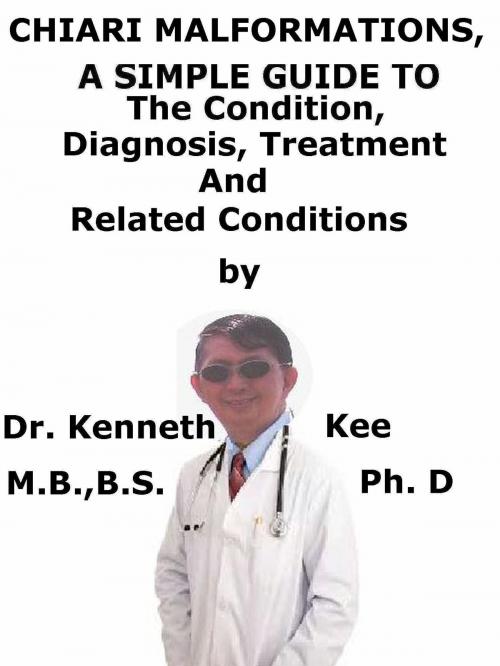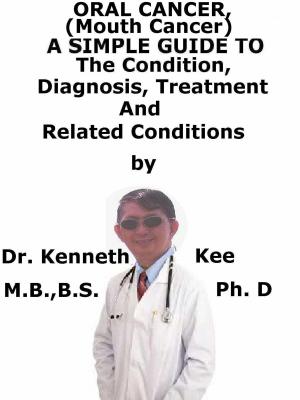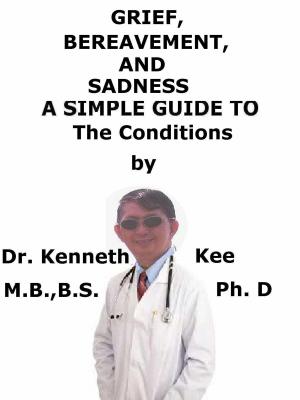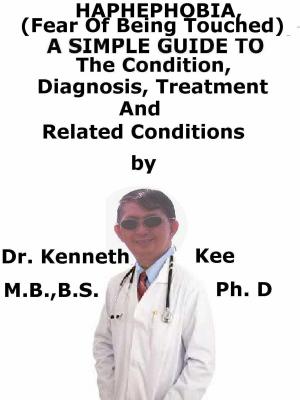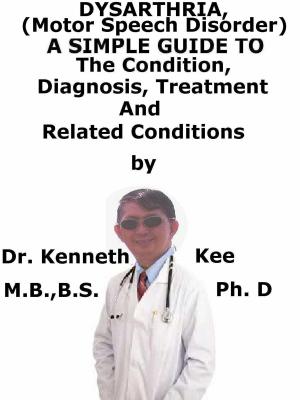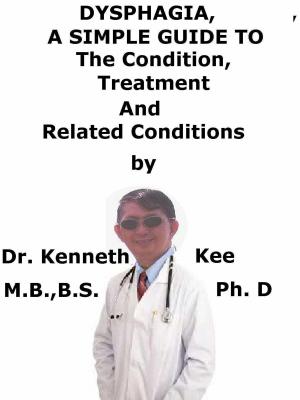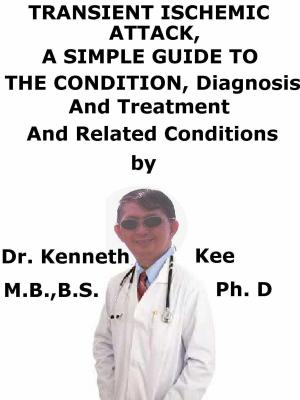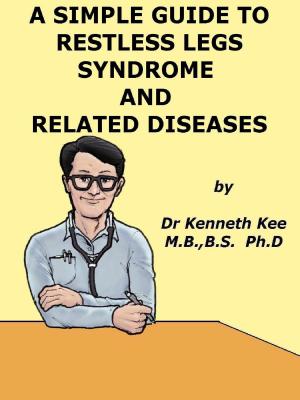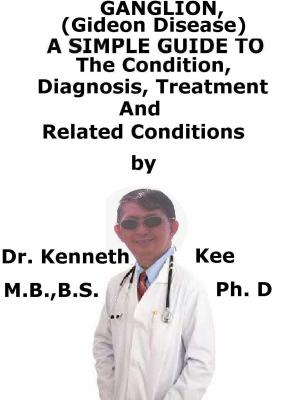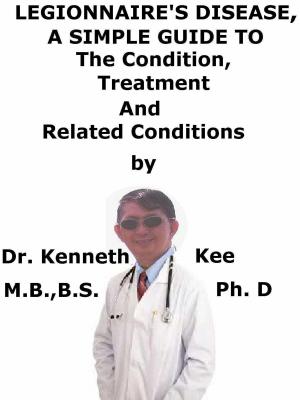Chiari Malformations, A Simple Guide To The Condition, Diagnosis, Treatment And Related Conditions
Nonfiction, Health & Well Being, Health, Ailments & Diseases, Nervous System & the Brain, Medical, Specialties, Internal Medicine, Neurology| Author: | Kenneth Kee | ISBN: | 9781370712434 |
| Publisher: | Kenneth Kee | Publication: | November 9, 2017 |
| Imprint: | Smashwords Edition | Language: | English |
| Author: | Kenneth Kee |
| ISBN: | 9781370712434 |
| Publisher: | Kenneth Kee |
| Publication: | November 9, 2017 |
| Imprint: | Smashwords Edition |
| Language: | English |
This book describes Chiari Malformations, Diagnosis and Treatment and Related Diseases
A Chiari malformation, previously known as Arnold-Chiari malformation, occurs when the lower part of the brain pushes down into the spinal canal.
A person with Chiari has the lowest part of the back of the brain extending into the spinal canal.
This can apply pressure on the brainstem, spinal cord, and block the flow of fluid.
These defects form during fetal development.
Because of genetic mutations or a maternal diet that lacked certain nutrients, the indented bony space at the base of the skull is unusually small.
As a result, there is increased pressure applied on the cerebellum.
This obstructs the flow of the cerebrospinal fluid.
Causes
The exact cause of Chiari malformations is not known.
It is likely to be present from birth, but is normally only found in adulthood when symptoms form or when an MRI scan is done.
Many patients are believed to be the result of part of the skull not sufficiently large for the brain.
4 types of Chiari malformations:
Type I is the most often observed form in children.
In this type, the lower part of the cerebellum but not the brain stem spreads into an opening at the base of the skull called the foramen magnum.
Normally, only the spinal cord passes through this skull opening.
Type I is the only form of Chiari malformation that can be acquired
Type II is normally only observed in children born with spina bifida.
Spina bifida is the incomplete formation of the spinal cord and its protective covering.
Type III is the most severe form of Chiari malformation.
It induces the protrusion or herniation of the brain stem and cerebellum through the foramen magnum and into the spinal cord.
Type IV is not normally compatible with life.
This affects an incomplete or undeveloped cerebellum.
Symptoms
Patients with mild Chiari malformations may have no symptoms
Others may have symptoms:
Dizziness
Feeling and being sick
Hearing loss and tinnitus
Muscle weakness
Numbness or tingling in the arms or legs
Vision problems
Headaches
Neck pain
Diagnosis:
The doctor will also examine functions regulated by the cerebellum and spinal cord:
Balance
Touch
Reflexes
Sensation
Motor skills
The doctor may perform diagnostic tests, such as:
X-ray of chest and brain or spine
CT scan of brain
MRI of brain
MRI is the imaging study of choice
Treatment
There is no medical treatment for Chiari malformations other than painkillers,
Only surgery may help improve the symptoms and prolong the life of patients.
The purpose of surgery is to stop any occurring symptoms from getting any worse.
Some people also have an improvement in their symptoms, mostly their headaches.
The surgery occasionally leads to no improvement or the symptoms getting worse.
There is also a small danger of severe complications, such as paralysis or a stroke
The treatment for Chiari I malformation is dependent on whether the patient has any symptoms and how serious they are.
If Chiari malformations produce no symptoms and do not disrupt activities of daily living, no treatment is required.
In other cases, painkillers can be used to treat symptoms such as pain.
If the headaches are serious or the patient has disorders caused by the pressure on the spinal cord (such as movement difficulties), surgery may be advised.
Surgery is the only treatment that can rectify functional defects or stop the progress of injury to the central nervous system.
Only Types I and II can be treated.
Type III Chiari normally dies during early childhood.
Type IV Chiari malformation is not compatible with life and the baby dies at birth or infancy.
TABLE OF CONTENT
Introduction
Chapter 1 Chiari Malformations
Chapter 2 Causes
Chapter 3 Symptoms
Chapter 4 Diagnosis
Chapter 5 Treatment
Chapter 6 Prognosis
Chapter 7 Syringomyelia
Chapter 8 Hydrocephalus
Epilogue
This book describes Chiari Malformations, Diagnosis and Treatment and Related Diseases
A Chiari malformation, previously known as Arnold-Chiari malformation, occurs when the lower part of the brain pushes down into the spinal canal.
A person with Chiari has the lowest part of the back of the brain extending into the spinal canal.
This can apply pressure on the brainstem, spinal cord, and block the flow of fluid.
These defects form during fetal development.
Because of genetic mutations or a maternal diet that lacked certain nutrients, the indented bony space at the base of the skull is unusually small.
As a result, there is increased pressure applied on the cerebellum.
This obstructs the flow of the cerebrospinal fluid.
Causes
The exact cause of Chiari malformations is not known.
It is likely to be present from birth, but is normally only found in adulthood when symptoms form or when an MRI scan is done.
Many patients are believed to be the result of part of the skull not sufficiently large for the brain.
4 types of Chiari malformations:
Type I is the most often observed form in children.
In this type, the lower part of the cerebellum but not the brain stem spreads into an opening at the base of the skull called the foramen magnum.
Normally, only the spinal cord passes through this skull opening.
Type I is the only form of Chiari malformation that can be acquired
Type II is normally only observed in children born with spina bifida.
Spina bifida is the incomplete formation of the spinal cord and its protective covering.
Type III is the most severe form of Chiari malformation.
It induces the protrusion or herniation of the brain stem and cerebellum through the foramen magnum and into the spinal cord.
Type IV is not normally compatible with life.
This affects an incomplete or undeveloped cerebellum.
Symptoms
Patients with mild Chiari malformations may have no symptoms
Others may have symptoms:
Dizziness
Feeling and being sick
Hearing loss and tinnitus
Muscle weakness
Numbness or tingling in the arms or legs
Vision problems
Headaches
Neck pain
Diagnosis:
The doctor will also examine functions regulated by the cerebellum and spinal cord:
Balance
Touch
Reflexes
Sensation
Motor skills
The doctor may perform diagnostic tests, such as:
X-ray of chest and brain or spine
CT scan of brain
MRI of brain
MRI is the imaging study of choice
Treatment
There is no medical treatment for Chiari malformations other than painkillers,
Only surgery may help improve the symptoms and prolong the life of patients.
The purpose of surgery is to stop any occurring symptoms from getting any worse.
Some people also have an improvement in their symptoms, mostly their headaches.
The surgery occasionally leads to no improvement or the symptoms getting worse.
There is also a small danger of severe complications, such as paralysis or a stroke
The treatment for Chiari I malformation is dependent on whether the patient has any symptoms and how serious they are.
If Chiari malformations produce no symptoms and do not disrupt activities of daily living, no treatment is required.
In other cases, painkillers can be used to treat symptoms such as pain.
If the headaches are serious or the patient has disorders caused by the pressure on the spinal cord (such as movement difficulties), surgery may be advised.
Surgery is the only treatment that can rectify functional defects or stop the progress of injury to the central nervous system.
Only Types I and II can be treated.
Type III Chiari normally dies during early childhood.
Type IV Chiari malformation is not compatible with life and the baby dies at birth or infancy.
TABLE OF CONTENT
Introduction
Chapter 1 Chiari Malformations
Chapter 2 Causes
Chapter 3 Symptoms
Chapter 4 Diagnosis
Chapter 5 Treatment
Chapter 6 Prognosis
Chapter 7 Syringomyelia
Chapter 8 Hydrocephalus
Epilogue
